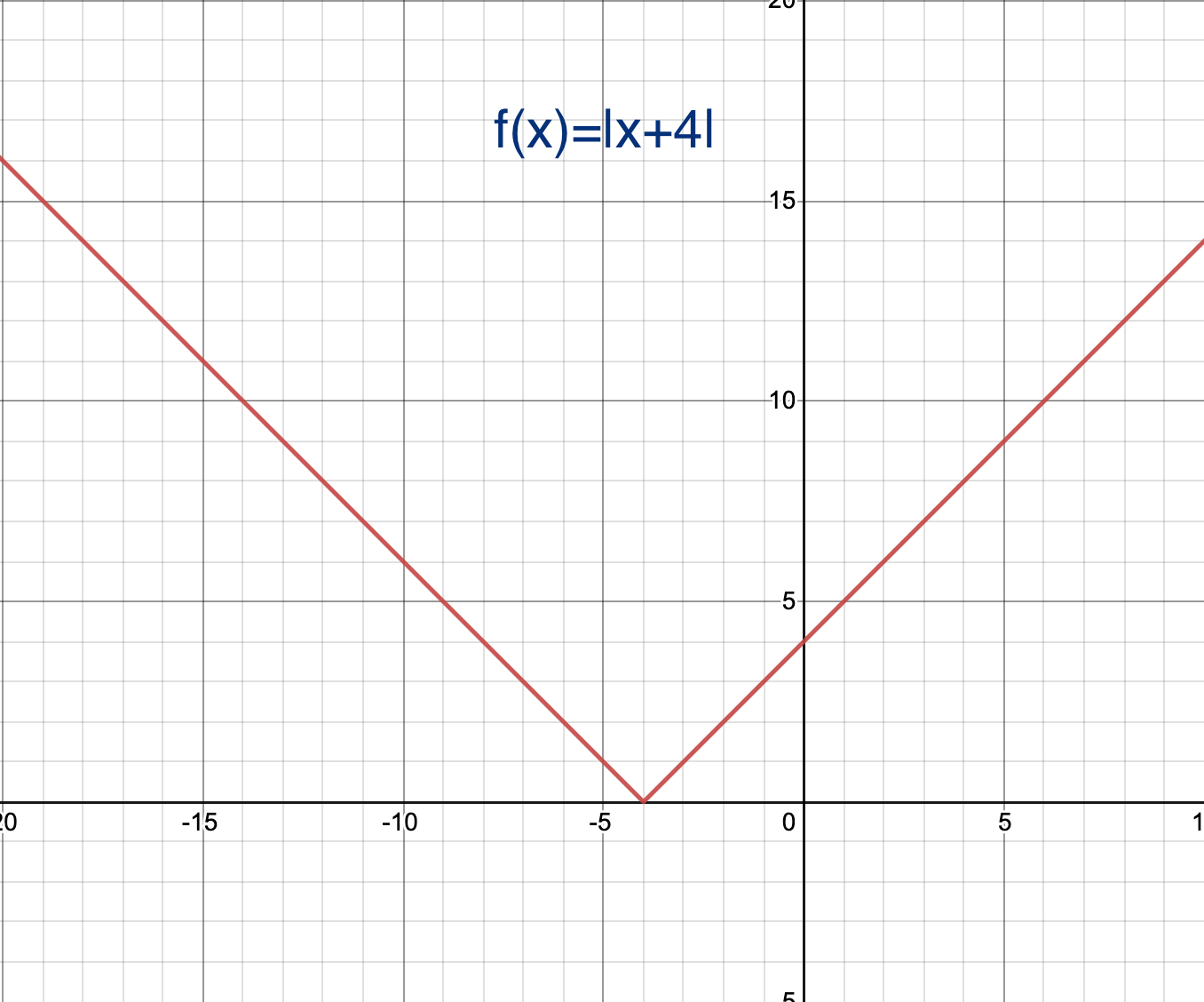Absolute Value Function
Revision as of 13:29, 28 October 2021 by Githubhenrykoo (talk | contribs) (→examples of Absolute Value Function)
Absolute Value Function
Absolute Value is when a function equation is expressed within absolute value symbols. For example y = |x|. |x|is mean the absolute value of x. In this example when x = 4 then y will equal 4. But if x = -4 then y will also be 4, this is because absolute value describes the distance from zero that a number is on the number line, only considering the distance. The absolute value of a number will never be negative.
Properties
- There must be at least one point you cant find a slope.
examples of Absolute Value Function
- f(x)=|x+4|
- f(x)=|2x|-2
- f(x)=|x+4|-3
- f(x)=|x|-3
